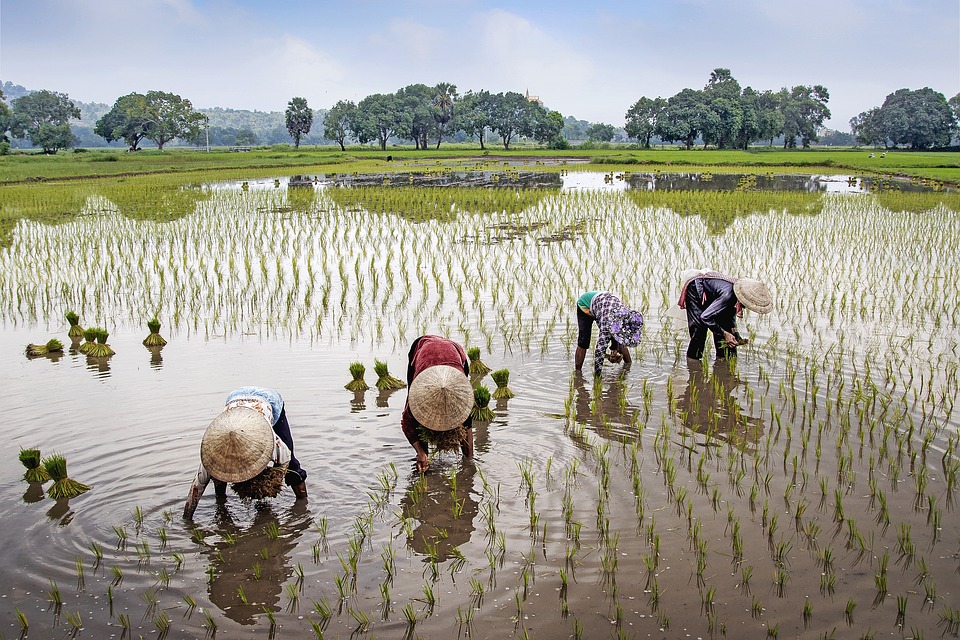# Harvesting Happiness: Sustainable Gardening Methods for a Better Future
The sun was just beginning to rise, casting a warm golden hue over the dew-soaked leaves of my garden. The sweet scent of ripe tomatoes mingled with the earthy aroma of freshly turned soil, and I couldn’t help but smile. Harvesting vegetables isn’t just about gathering produce; it’s about nurturing happiness, and that felt particularly significant on a crisp autumn morning. Sustainable gardening methods have transformed my outdoor sanctuary into a vibrant ecosystem, where every plant, insect, and even worm plays a vital role. Let’s dive into how you can cultivate your own patch of happiness through sustainable gardening methods for a brighter, greener future!
## The Joy of Sustainable Gardening
Sustainable gardening is more than just a trend; it’s a lifestyle and a philosophy geared toward preserving our planet’s resources while enjoying the rewarding benefits of gardening. This approach minimizes environmental impact, encourages biodiversity, and promotes healthier living. By adopting practices such as permaculture, companion planting, and organic gardening, we can create thriving gardens without depleting the Earth’s resources.
### Understanding the Principles of Sustainability
1. **Resource Management**: Utilizing renewable resources and minimizing waste allows your garden to flourish while protecting the environment.
2. **Biodiversity**: A diverse ecosystem not only keeps pests in check but also ensures resilience against diseases and pests.
3. **Soil Health**: Healthy soil is the foundation of a sustainable garden. Composting and adding organic matter enhance soil structure and nutrients.
4. **Water Conservation**: Making efficient use of water through techniques like drip irrigation can dramatically reduce water waste.
5. **Native Plants**: Incorporating indigenous plants supports local wildlife and requires less care, leading to lower resource consumption.
## Creating Your Sustainable Garden
### 1. Start with a Plan
Before you dig into the earth, sketch out a basic plan for your garden. Consider what you want to grow, the layout, and the sunlight each area receives. This will not only save time but also ensure efficient use of resources.
**Pro Tip**: Use companion planting to maximize space and deter pests. For example, planting marigolds with tomatoes can help ward off nematodes, while basil enhances tomato flavor.
### 2. Build Healthy Soil
The cornerstone of any successful garden is its soil. Start composting kitchen scraps, yard waste, and brown matter to create your own nutrient-rich compost.
**Pro Tip**: Create a “lasagna garden” by layering materials—cardboard, green waste, and brown waste—allowing nature to break it down into rich soil over time.
### 3. Embrace Rainwater Harvesting
Collect rainfall from your roof into barrels to hydrate your plants. It’s an eco-friendly way to provide hydration without straining local water resources.
**Pro Tip**: Install soaker hoses in your garden beds to reduce water evaporation and deliver moisture directly to the soil.
### 4. Choose Organic Pest Control Methods
Pests are a natural part of gardening, but it’s crucial to manage them without harmful chemicals. Use insecticidal soaps, neem oil, or even garlic oil to keep plants healthy.
**Pro Tip**: Create a habitat for beneficial insects, like ladybugs and lacewings, which will naturally help keep the pest population under control.
### 5. Grow Your Own Seeds
Seed-saving not only empowers you as a gardener but also contributes to biodiversity. Collect seeds from your best performers each year and store them properly for planting in the following season.
**Pro Tip**: Label your seeds clearly, noting the planting date and variety, to keep track of your garden’s progression.
## The Benefits Beyond the Garden
### Mental Well-being
Gardening can be a form of meditation. The act of planting, nurturing, and harvesting fosters a sense of calm and satisfaction. Studies show that spending time in nature can reduce anxiety and elevate mood.
### Physical Health
Turning your backyard into a sustainable garden isn’t just good for your mental health; it’s great for your physical health too! Engaging with soil and plants is a form of exercise that builds strength, flexibility, and endurance.
### Community Building
Sharing your gardening journey cultivates community. By participating in local farmer’s markets, community gardens, or simply exchanging produce with neighbors, you foster a sense of belonging and togetherness.
## Closing the Loop: Composting for a Sustainable Future
One of the most effective sustainable gardening practices is composting. It reduces landfill waste and returns nutrients to the soil. You can easily set up a composting system in your backyard.
Start with a mix of green materials (like vegetable scraps and grass clippings) and brown materials (like dry leaves and cardboard). Keep it moist and aerated to facilitate decomposition. In a few months, you’ll have rich compost to nourish your garden!
## Pro Tips for Enhanced Sustainable Gardening
1. **Mulching**: Use organic mulch to maintain soil moisture, suppress weeds, and enrich soil as it decomposes.
2. **Seasonal Planting**: Rotate your crops seasonally to prevent soil depletion and control pests naturally.
3. **Vertical Gardening**: Maximize space by growing plants vertically. Use trellises for climbing plants and hanging systems for herbs.
4. **Education and Adaptation**: Stay informed about sustainable practices and adapt them based on the changing climate and your local conditions.
### Conclusion: A Sustainable Future Awaits
Embrace the art of sustainable gardening not just as a method of growing food, but as a way of life that enhances your overall happiness and contributes to a better future for our planet. Dive into the joy of harvesting not just vegetables, but a lifestyle rich in connection, health, and mindfulness.
Starting your journey may seem daunting, but each small step toward sustainability is a step toward a happier, healthier you and a healthier planet. So grab your spade, sow some seeds, and let the magic of sustainable gardening transform your life and the world around you! Remember, every garden is a celebration of life, resilience, and the promise of a better tomorrow. Happy gardening!



